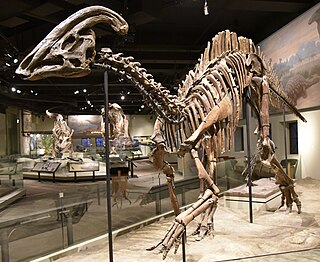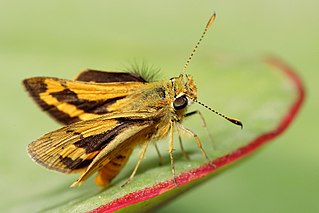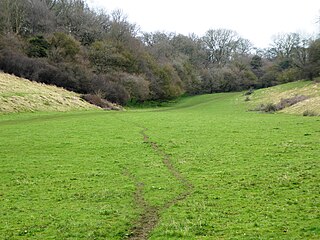
Parasaurolophus is a genus of herbivorous ornithopod dinosaur that lived in what is now North America and possibly Asia during the Late Cretaceous Period, about 76.5–73 million years ago. It was an herbivore that walked both as a biped and as a quadruped. Three species are universally recognized: P. walkeri, P. tubicen, and the short-crested P. cyrtocristatus. Additionally, a fourth species, P. jiayensis, has been proposed, although it is more commonly placed in the separate genus Charonosaurus. Remains are known from Alberta (Canada), New Mexico and Utah, and possibly Heilongjiang, (China). The genus was first described in 1922 by William Parks from a skull and partial skeleton found in Alberta.

Pluridens is an extinct genus of marine lizard belonging to the mosasaur family. Pluridens is classified within the Halisaurinae subfamily alongside the genera Phosphorosaurus, Eonatator and Halisaurus.

The pygmy long-eared bat is a vespertilionid bat, found in the north of the Australian continent. An insectivorous flying hunter, they are one of the tiniest mammals in Australia, weighing only a few grams and one or two inches long.
Explorornis is a genus of Mesozoic birds which lived during the mid-late Turonian stage, around 90 million years ago, in the Bissekty Formation of the Kyzyl Kum, in present-day Uzbekistan.

Ocybadistes walkeri, the greenish grass-dart, green grass-dart, southern dart or yellow-banded dart, is a type of butterfly known as a skipper found in eastern and southern Australia, with one subspecies found in the Northern Territory.

Crossocerus is a genus of square-headed wasps in the family Crabronidae. There are at least 250 described species in Crossocerus.

Park Wood is a 31.1-hectare (77-acre) biological Site of Special Scientific Interest west of Chilham in Kent.

Great Shuttlesfield Down is a 21.8-hectare (54-acre) biological Site of Special Scientific Interest north of Folkestone in Kent.
Crossocerus impressifrons is a species of square-headed wasp in the family Crabronidae. It is found in North America.

Crossocerus nitidiventris is a species of square-headed wasp in the family Crabronidae. It is found in North America.

Crossocerus cetratus is a Palearctic species of wasp.

Crossocerus elongatulus is a Palearctic species of solitary wasp.

Crossocerus podagricus is a Palearctic species of solitary wasp.
Crossocerus wesmaeli is a Palearctic species of solitary wasp.

Crossocerus megacephalus is a Palearctic species of solitary wasp.

Crossocerus palmipes is a Palearctic species of solitary wasp.
Crossocerus styrius is a Palearctic species of solitary wasp.
Crossocerus varus is a Palearctic species of solitary wasp.












